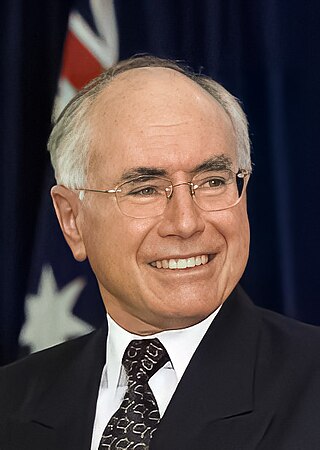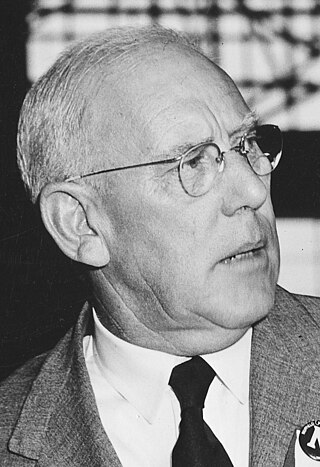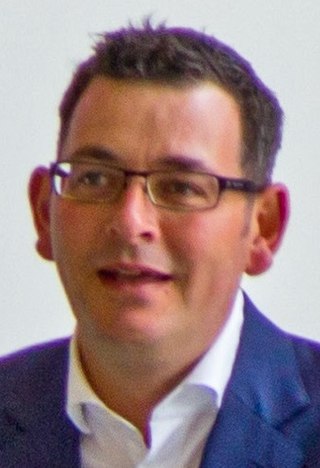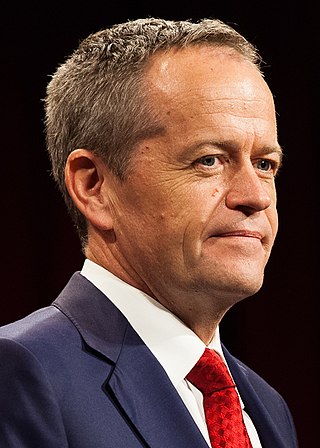Related Research Articles

The 2001 Australian federal election was held in Australia on 10 November 2001. All 150 seats in the House of Representatives and 40 seats in the 76-member Senate were up for election. The incumbent Liberal Party of Australia led by Prime Minister of Australia John Howard and coalition partner the National Party of Australia led by John Anderson defeated the opposition Australian Labor Party led by Kim Beazley. As of 2024,this was the most recent election to feature a rematch of both major party leaders. Future Opposition Leader Peter Dutton entered parliament at this election.

The Division of Dunkley is an Australian electoral division in the state of Victoria. The division is located south-east of Melbourne on the Mornington Peninsula. It covers an area of approximately 152 square kilometres (59 sq mi) from Seaford in the north to Mount Eliza in the south and Langwarrin South in the southeast. Following the 2024 Dunkley by-election,Jodie Belyea currently represents the seat.
The Division of Mayo is an Australian electoral division located to the east and south of Adelaide,South Australia. Created in the state redistribution of 3 September 1984,the division is named after Helen Mayo,a social activist and the first woman elected to an Australian University Council. The 9,315 km2 rural seat covers an area from the Barossa Valley in the north to Cape Jervis in the south. Taking in the Adelaide Hills,Fleurieu Peninsula and Kangaroo Island regions,its largest population centre is Mount Barker. Its other population centres are Aldgate,Bridgewater,Littlehampton,McLaren Vale,Nairne,Stirling,Strathalbyn and Victor Harbor,and its smaller localities include American River,Ashbourne,Balhannah,Brukunga,Carrickalinga,Charleston,Cherry Gardens,Clarendon,Crafers,Cudlee Creek,Currency Creek,Delamere,Echunga,Forreston,Goolwa,Gumeracha,Hahndorf,Houghton,Inglewood,Kersbrook,Kingscote,Langhorne Creek,Lobethal,Macclesfield,McLaren Flat,Meadows,Middleton,Milang,Mount Compass,Mount Pleasant,Mount Torrens,Mylor,Myponga,Normanville,Norton Summit,Oakbank,Penneshaw,Piccadilly,Port Elliot,Second Valley,Springton,Summertown,Uraidla,Willunga,Woodchester,Woodside,Yankalilla,and parts of Birdwood,Old Noarlunga and Upper Sturt.
The Division of Sturt is an Australian electoral division in South Australia. It was proclaimed at the South Australian redistribution of 11 May 1949. Sturt was named for Captain Charles Sturt,a nineteenth century British Military officer and explorer.
The Division of Hawker was an Australian Electoral Division in South Australia. The division was created in 1969 and abolished in 1993. It was named for Charles Hawker,who was a federal MP 1929–38. It was located in the southern suburbs of Adelaide and took in the suburbs of Ascot Park,Clovelly Park,Edwardstown,Glenelg,Goodwood and Morphettville. Hawker was located between the seats of Hindmarsh and Kingston.
This article provides details on candidates who stood at the 2007 Australian federal election.
Alan Peter Steedman was an Australian journalist and politician. He represented the Australian Labor Party (ALP) in the House of Representatives from 1983 to 1984,holding the Victorian seat of Casey.
Paul Anthony Filing is an Australian former politician.
This article provides information on candidates who stood for the 1984 Australian federal election. The election was held on 1 December 1984.
A by-election was held for the Australian House of Representatives seat of Flinders on 4 December 1982. It was triggered by the resignation of the sitting member and former Liberal Party deputy leader,Sir Phillip Lynch. Fifteen people nominated for Liberal preselection,including Jim Short,Roger Johnston and Richard Alston. The Labor candidate,Rogan Ward,was a previous mayor of the former City of Frankston.

The 1950 New South Wales state election was held on 17 June 1950. It was conducted in single member constituencies with compulsory preferential voting and was held on boundaries created at a 1949 redistribution. The election was for all of the 94 seats in the Legislative Assembly,which was an increase of 4 seats since the previous election.
This article provides details on candidates who stood at the 2010 Australian federal election.

The 2014 Victorian state election,held on Saturday,29 November 2014,was for the 58th Parliament of Victoria. All 88 seats in the Victorian Legislative Assembly and 40 seats in the Victorian Legislative Council were up for election. The incumbent centre-right Coalition minority government,led by Liberal Party leader and Premier Denis Napthine and National Party leader and Deputy Premier Peter Ryan,was defeated by the centre-left Labor Party opposition,led by Daniel Andrews. The Greens won two lower house seats,their first Legislative Assembly seats in a Victorian state election,whilst increasing their share of upper house seats. The new Andrews Ministry was sworn in on 4 December 2014.
At the 2016 federal election of the 150 House of Representatives seats the Liberal/National Coalition won 76,a one-seat majority,Labor won 69 seats and crossbenchers won the remaining five. A redistribution in 2017/18 changed the representation entitlements. For the next election,the number of seats in the House will increase to 151,South Australia will lose a seat,Victoria and the Australian Capital Territory (ACT) will gain one seat each.
This is a list of candidates for the 2014 Victorian state election. The election was held on 29 November 2014.
The 1993 South Australian state election was held on 11 December 1993.

The 2019 Australian federal election was held on Saturday 18 May 2019 to elect members of the 46th Parliament of Australia. The election had been called following the dissolution of the 45th Parliament as elected at the 2016 double dissolution federal election. All 151 seats in the House of Representatives and 40 of the 76 seats in the Senate were up for election.
Christopher John Crewther is an Australian politician. He was a Liberal Party of Australia member of the Australian House of Representatives from 2016 to 2019 before being elected to the Victorian State Parliament in 2022,representing the division of Mornington.

The Division of Macnamara is an Australian Electoral Division in the state of Victoria,which was contested for the first time at the 2019 federal election. The division is named in honour of Dame Jean Macnamara,a doctor and medical researcher who specialised in the polio virus and was involved in children's health initiatives.

This is a list of electoral division results for the 2019 Australian federal election in the state of Victoria. Victoria bucked the national trend,seeing a swing from the Coalition to Labor,whereas the swing across Australia was from Labor to the Coalition.
References
- ↑ White, G. Pawley, A Handbook of Cornish Surnames.
- ↑ Malone, Paul (29 September 1984). "All sitting ALP members endorsed". The Canberra Times. Retrieved 17 January 2024.
- ↑ Psephos: 1984 Federal election, Victoria
- ↑ Psephos: 1996 Federal election, Victoria